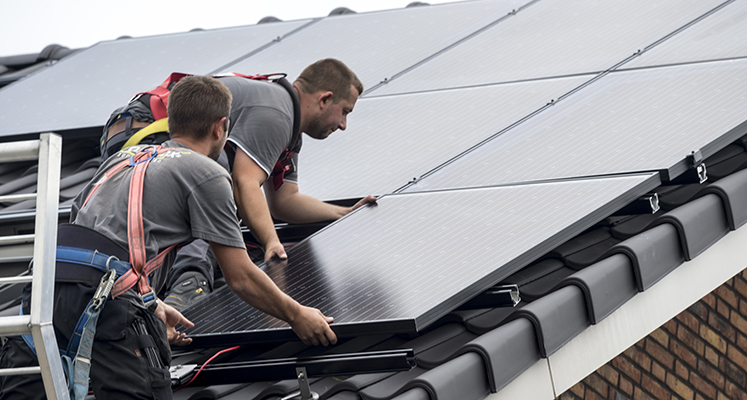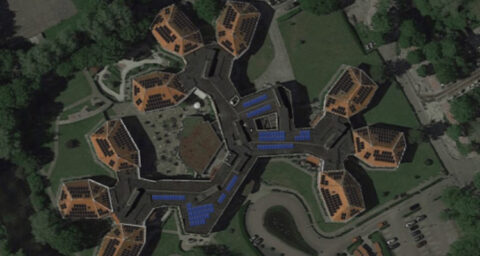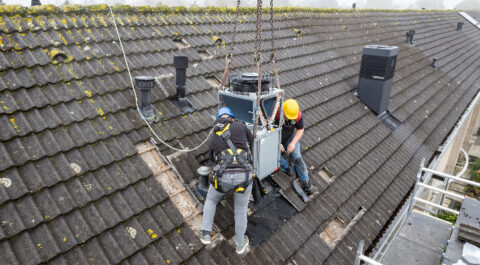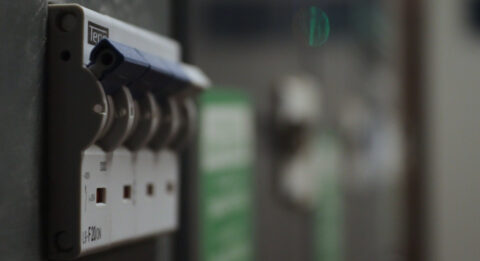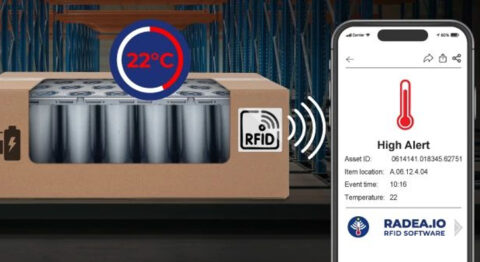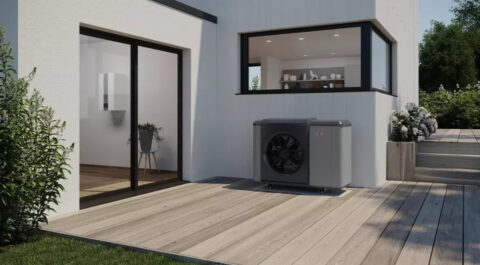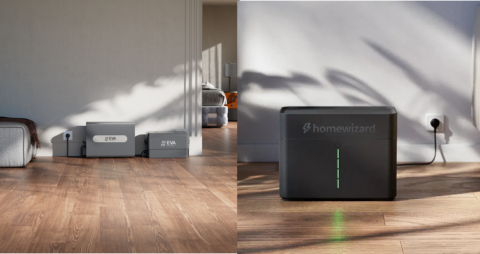Solar panels are appearing on more and more roofs. What types of these panels exist, what do they differ in, what are their advantages and disadvantages, and perhaps you can also see which type you are up against?
Monocrystalline
Two well-known and widely used types of solar panels are the monocrystalline and polycrystalline. To begin with the first, mono crystalline solar panels involve thin slices of silicon sandwiched under a sheet of glass. These cells have a uniform deep blue or black color, which looks particularly attractive. The fact that the corners of the cells are flattened does create a distinctive checkered pattern, because you can see the white background (backsheet) in those areas.
It is nicer if a black background is used instead of white. The entire panel is then uniformly dark colored, without all those white checks and lines between the cells. This so-called all black or full black solar panel absorbs more heat, so the efficiency decreases slightly in hot weather.
Thanks to their high efficiency, monocrystalline solar panels are very suitable for small roofs, or places with little space in general. In addition to a long lifespan of often up to twenty-five years, power conservation and thus efficiency is also very high all the while. Because of the more complex manufacturing process, these solar panels are more expensive than polycrystalline panels, especially if a matching black frame is chosen.
Polycrystalline
Polycrystalline solar panels are very similar to monocrystalline panels, except that these cells have a distinctive blue color that is not uniform this time. Color differences can be clearly seen on the surface of the solar cells, it looks much like a pattern of broken shards.
Again, these are thin slices of silicon sandwiched under a sheet of glass, only they are made via a simpler and therefore cheaper production technique. Because poly crystalline solar panels are a lot cheaper than monocrystalline panels, they are often used for large areas, as well as when the aesthetic aspect is less important.
The efficiency of polycrystalline solar panels is almost always lower than monocrystalline panels, requiring a larger area for the same power output. Lifetime and power conservation are about the same, though. It is often said that poly panels work better in direct sunlight, while mono panels have better efficiency in indirect (diffuse) light. Given our climate, the difference may still be negligible on an annual basis.
Glass-glass and glass-film
If we take another look at monocrystalline and polycrystalline, there is a further distinction to be made there. In glass-film solar panels, the solar cells are sandwiched between a sheet of glass (top) and a layer of film (bottom). This foil is less robust and may eventually be affected by such things as water (vapor), dirt, or temperature differences. Care should also be taken during transport and installation to avoid damage.
Glass-glass solar panels are more robust and wear-resistant because this time the cells are sandwiched between two sheets of glass. This should guarantee a longer life because it is less susceptible to damage, moisture, dirt and weather conditions. Also, the power drawback in the long run should be lower. These panels are obviously a lot heavier than glass-foil panels.
Thin film
A new, emerging type of solar panel is the thin film or amorphous panel. Which includes the two variants CIS (Copper, Indium, Selenium) and CISG (Copper, Indium, Gallium, Selenium). In this solar panel, a very thin layer of light-sensitive material is applied to a solid substrate, so you can think of this panel as one large solar cell. The panels have a uniform black color, which makes them look very nice and sleek on the roof (especially CISG). They look quite similar to the all black version of monocrystalline, including the black frame.
This is a simple and also more environmentally friendly (especially CIS) manufacturing technique, which greatly simplifies mass production. That makes these solar panels a lot cheaper than either type of crystalline panels. In addition, thin film panels are less sensitive to heat and shade.
All in all, we are still talking about a relatively low efficiency, requiring considerably more roof area for a comparable yield. The lifespan is also shorter than monocrystalline and polycrystalline, at fifteen to twenty years. There is also a flexible variant of thin film that is ideal for curved and other non-planar surfaces.
Other variants
There are other panel types you may have to deal with as an installer. We'll name a few.
You can read all about PVT panels, which generate both energy and heat, in a separate article. A very different option are the colored solar panels, for example in red or brown, matching the color of the roof or tiles. The yield is lower thanks to this color, though.
Furthermore, integrated solar panels are possible, where the panels are incorporated seamlessly into the roof structure, or the solar cells are even integrated into the roof tiles themselves. A beautiful sight and less weight, though a major operation and a lot more expensive.
Or what about dummy solar panels that are not solar panels at all. They do not generate power themselves, you just use them to create a nice pattern on the roof. Think of leftover spots where no solar panel will fit, or spots with only shadow.
Solar panels that convert light into energy on both sides also exist. In that case, the underside collects indirect light that is reflected through the (preferably) light-colored roof. Then there are the transparent and therefore very inconspicuous solar panels. They allow an enormous amount of light through, making them ideal as windows, wall panels, for on a conservatory, carport, or as a canopy.
